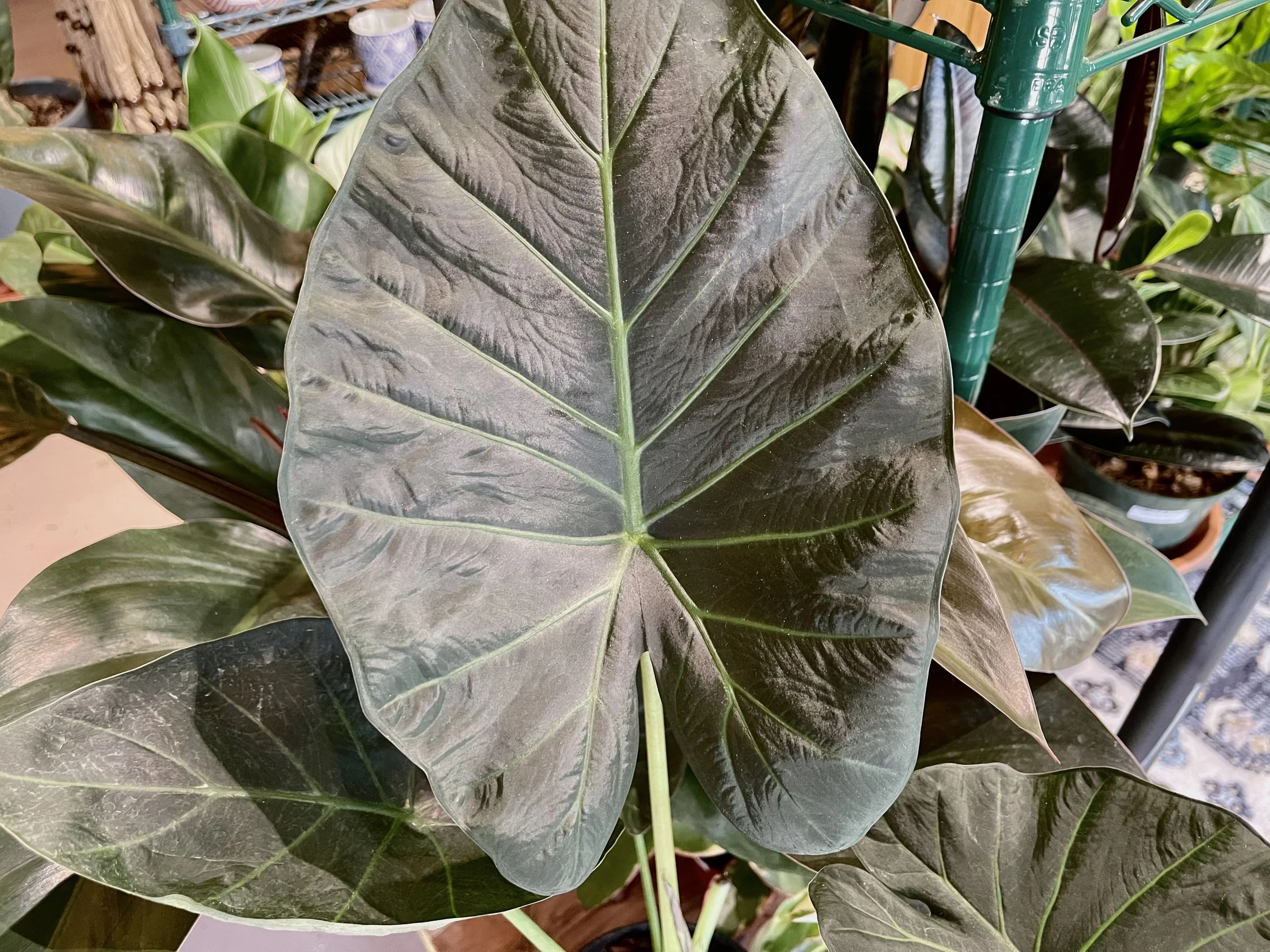Elephant Ear Care
Family: Arum
Genus: Alocasia
Botanical Name: Alocasia macrorrhiza Odora (Upright)
Difficulty: Not beginner friendly
Light
Your elephant ear will be happiest in full sun to partial shade.
Water
They like to be kept moist at all times, and are very hard to over water. In drier conditions, you may even have to water your elephant ear daily.
Climate
Your elephant ear will do best in climates similar to their natural habitat. They love temperatures 60°F or above and will suffer once temperatures start to drop. This is why USDA zones are so important to consider when planting them outside. If your zone tends to get cooler than 60°F, you may need to bring them inside or dig them up in the cooler months.
Soil
Elephant ears like a slightly acidic soil that is rich and humusy. You want to keep the soil around these guys pretty wet—never let it dry out.
Pests and Diseases
Your elephant ear can attract spider mites, aphids, mealybugs, and scale.
Tips
They’re perfect for those areas in your garden that don’t seem to dry out. (if planting them outside)
They don’t tolerate frost, so you may want to grow them in a container if your area gets really cold.
Be careful when taking cuttings, and keep your elephant ear away from pets because they contain very poisonous calcium oxalate crystals.
Use a potting mix with a lot of organic potting matter to give them the most nutrients.
Signs your elephant ear isn’t happy
Wet brown spots: over watered (which is hard to do)
Yellow leaves: over watered
Dry crispy leaves: under watered
How to propagate
Alocasia cannot be propagated by division, so you can propagate them by collecting seeds from their flowers. However, this is very time-consuming.
Fun Facts
Their need for an almost soggy soil makes them ideal for areas around ponds and water.
They are nicknamed “the Tree that Grows up to the Heavens”.
They are thought to be the giant plant in Jack and the Beanstalk.
Hardiness Zones
Before you move your plant outside, be sure to check the hardiness zone to save yourself some grief and the loss of a beloved plant.
The hardiness zone for elephant ear plants are : 9-11 if you want them to be evergreen, or they can survive in zones 8-9. They will die in the winter and return in the spring as long as you aren’t in an area that gets super cold in the winter. If you are in an area that gets really cold, they will die if not dug up and stored until the warmer months return.
If you live in Tennessee, here’s a hardiness map to help you decide if your plant can survive outside!


